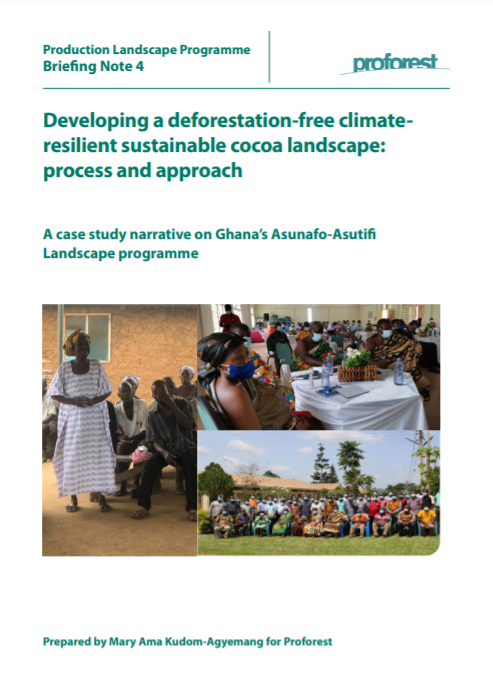Developing a Deforestation-Free Climate Resilient Sustainable Cocoa Landscape: Process and Approach
The Asunafo-Asutifi Landscape is one of the major agro-commodity production landscapes in Ghana
that is noted for cocoa production and accounts for about 10% of the national cocoa output. Of the
total landscape area of 328,512ha, 62% is under agricultural production of which cocoa is a major
component. Forest is a significant feature in the landscape, accounting for 32% of the land area. As
with most agro-commodity production landscapes, deforestation caused by agricultural expansion into forests, and logging (both legal and illegal), is high in the Asunafo-Asutifi landscape.
This case study showcases the Production Landscape Programme (PLP), which is aimed at helping companies and other stakeholders throughout the agro-commodity production landscape to align with national policy processes to address challenges such as deforestation, child labour, low productivity, smallholder inclusion, access to land, and gender equality inherent in agro-commodity production. The PLP is a three-year programme being implemented in Ghana, Cameroon, Liberia, Indonesia and China, with funding support from the UK Aid through the Forest Governance, Markets and Climate (FGMC) Programme to help companies align with national initiatives to reduce
deforestation and improve social and environmental outcomes of agricultural commodity production. The Asunafo-Asutifi Landscape Programme is being developed under the framework of the Ghana Cocoa Forest REDD+ Programme (GCFRP). The GCFRP is the Ghana government’s move to articulate the world’s first commodity-based landscape-level emissions reduction programme funded by the Forest Carbon Partnership Facility (FCPF).
